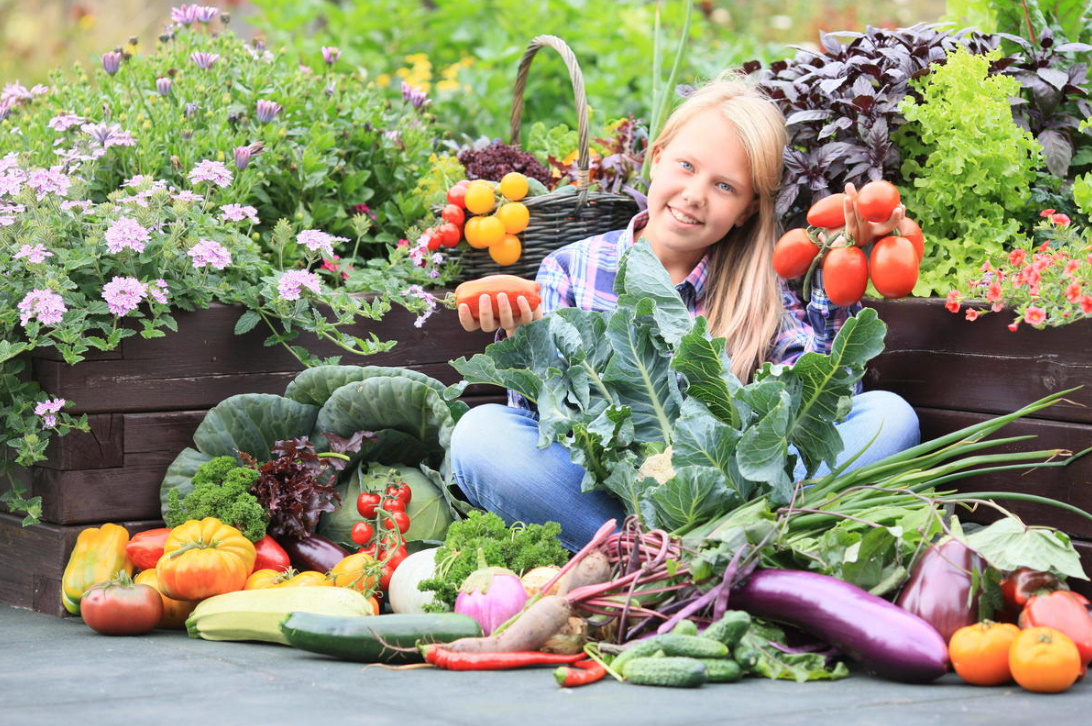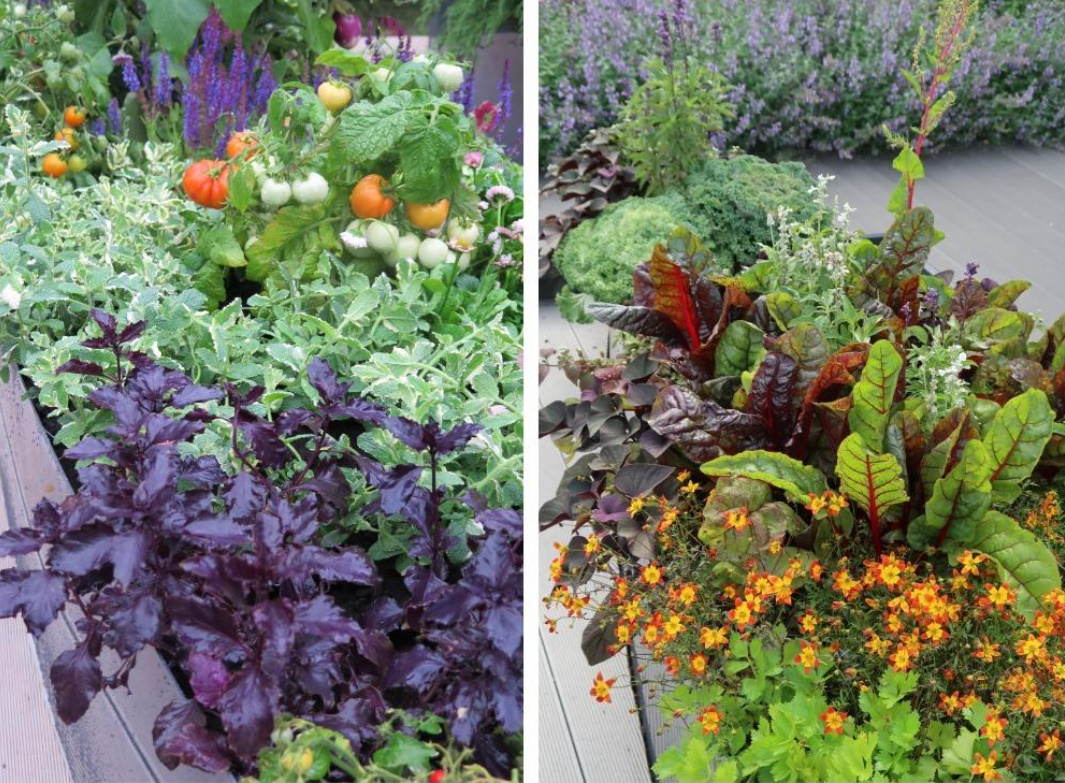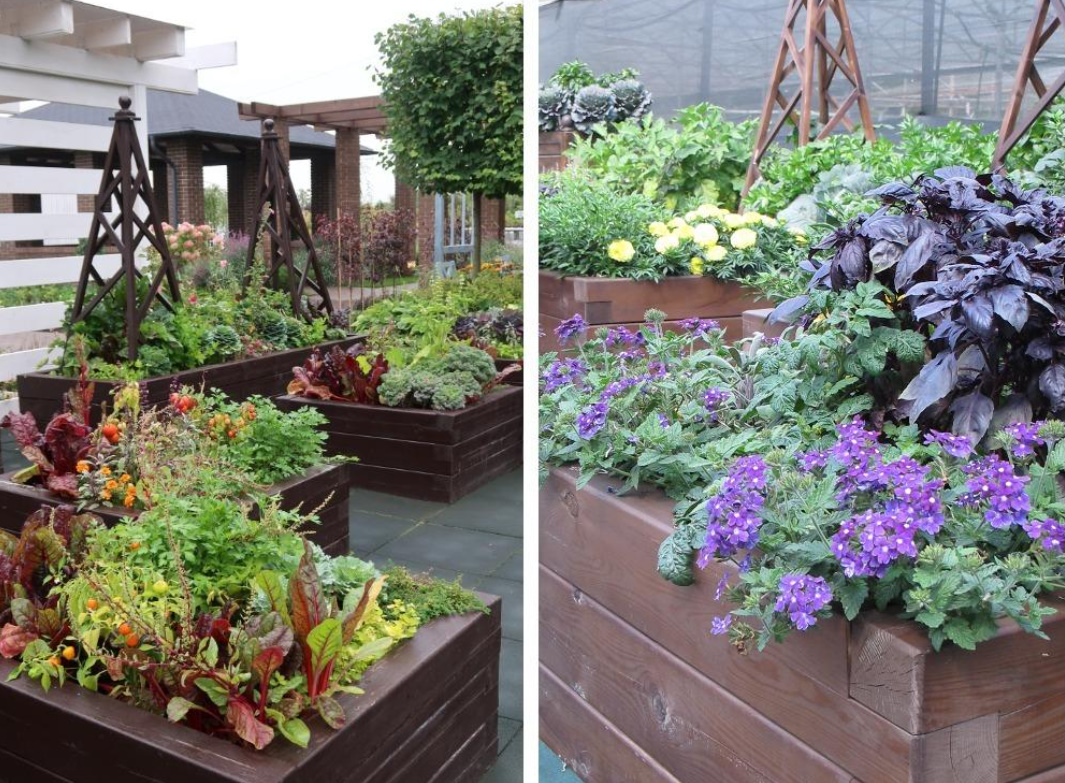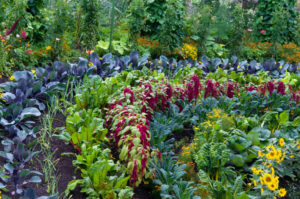
The concept of “decorative vegetable garden” came to us from the distant Middle Ages, when pharmacy gardens began to appear in monasteries, and in castles and fortresses — vegetable gardens for growing herbs and vegetables for the master’s table. As a rule, rather modest-sized plots were allocated for them, but the predominant use of the correct forms made it possible to dispose of small spaces with the greatest rationality. So the tradition of splitting the garden in a regular style began to form.
In this style, the strict clarity of the correct geometric shapes was organically combined with the rules important in gardening, taking into account the location of the beds relative to the cardinal directions and the convenience of moving around the garden. Until now, garden plots built according to the rules of symmetry are very popular due to the simplicity of their breakdown and ease of use.
Decorative vegetable garden in a free natural style
Over the centuries since the appearance of the first ornamental vegetable gardens, artistic styles and trends have undergone significant changes. Currently, spatial solutions made in the free natural style of Natur Garden are becoming more and more popular.
In this case, vegetable and green crops are planted directly in flower beds and mixborders. For example, creating a flower and vegetable mixborder, you can use chard leaf beet in planting, which with its textured and beautifully colored leaves will create an interesting background for other plants.

Dill looks great in a flower garden, and curly parsley makes original and smooth borders. The Állium schoenoprásum will decorate any composition with its delicate flowers and graceful arrows of leaves.
In the center of such a vegetable garden, you can plant decorative low-growing varieties of apple or plum trees, currant, gooseberry or chokeberry grafted on a stem. Plants on the stem are good because they give less shade and do not interfere with the normal development of other crops, and in their trunk circles it is possible to place plantings, including planting annual flowers. Such a decorative vegetable garden will look appropriate in a garden of any style.
Not only beauty, but also benefits
As already mentioned, the main distinguishing feature of a decorative vegetable garden is the ability to combine the planting of utilitarian and decorative crops in a single space, while such a combination is often not only aesthetic, but also practical.
For example, by planting Tagetes tenuifolia next to cucumbers, we not only get a beautiful composition, but also prevent the development of powdery mildew on fruits and leaves. Onions and carrots are good to plant together, as they protect each other from carrot and onion flies. And if you add Ocimum basilicum to them in the composition, you will get a very original color combination.

If a strawberry bed is framed with alyssum, petunia or other fragrant annuals, their fragrance will attract pollinating insects, and your harvest will increase significantly.
Very often, an ornamental vegetable garden is used for growing spicy-aromatic plants and medicinal herbs. In the center of such a garden, you can arrange a recreation area, and plant roses, lavender, sage, catnip, monarda and other fragrant plants around, which will be a wonderful addition to the overall composition.
Decorative vegetable garden in the suburban landscape
To visually separate the garden area from the rest of the garden, it is good to use light pergolas screens, placing decorative pumpkins with small, original fruits, Phaseolus coccineus with long pods and bright inflorescences, or hyacinth beans with purple pods and flowers on them. You can also create a hedge around the garden from fruit bushes — currants, Lonicera edulis or Grossularia.
Experiment more boldly with the layout of your garden and with the assortment of plants selected for it. Use bright colors, unusual shapes, favorite vegetables and flowers, and your garden will become a real work of art.





Leave a Reply